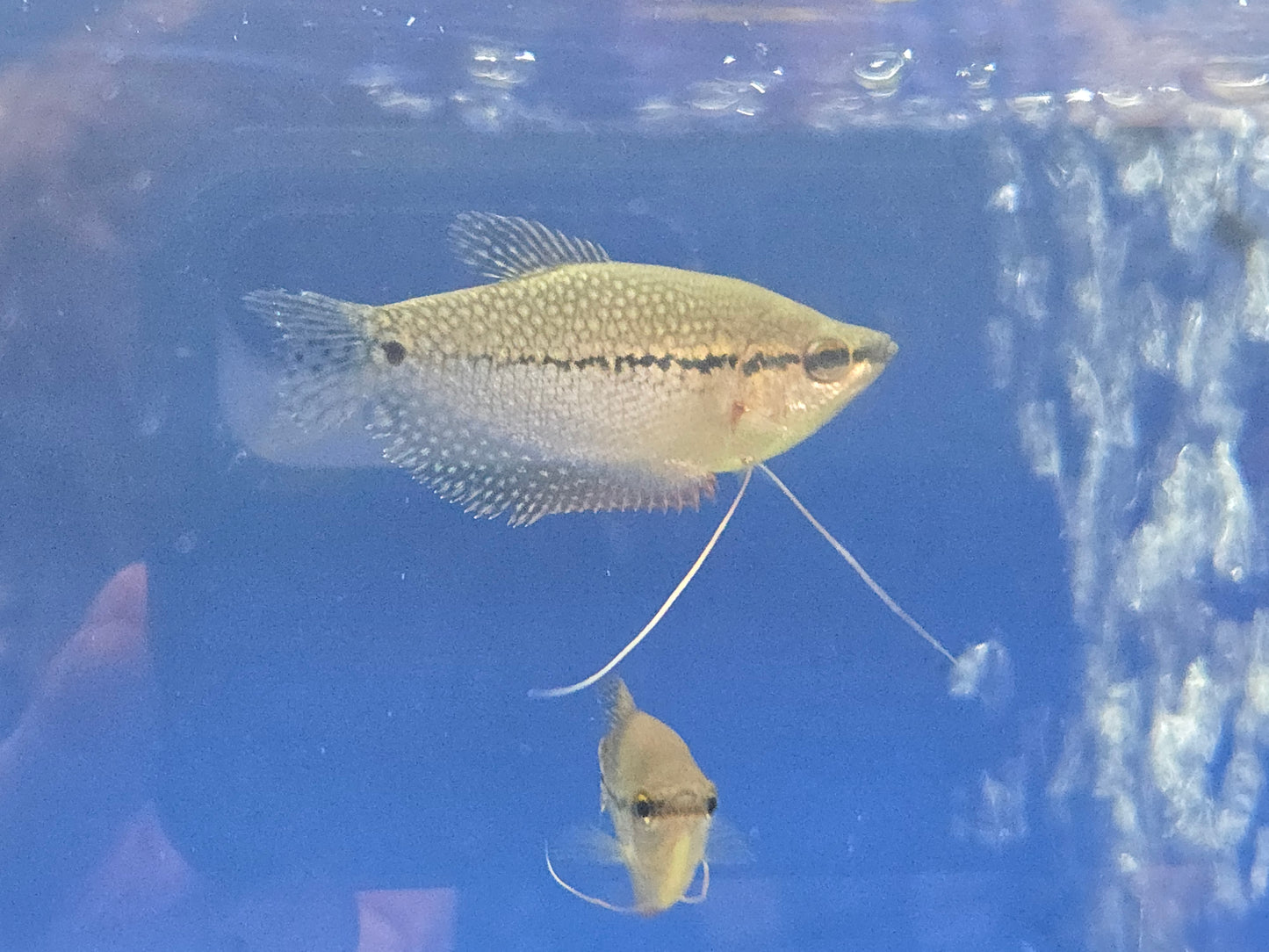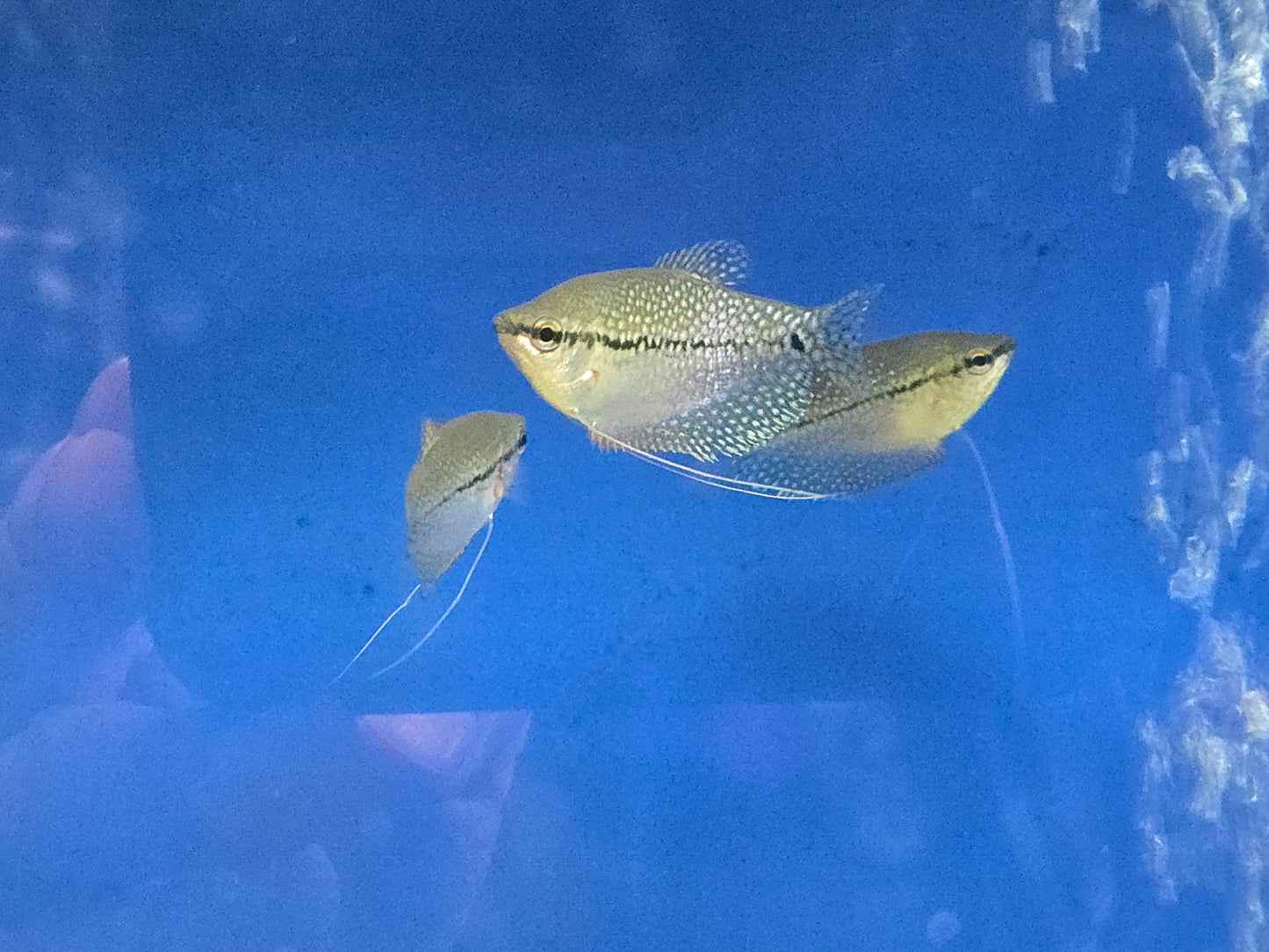Fancy Fish and Aquascapes
Pearl Gourami ~ Trichopodus leerii
Pearl Gourami ~ Trichopodus leerii
Couldn't load pickup availability
The Pearl Gourami, also known as the Leeri Gourami, is a peaceful and elegant labyrinth fish known for its shimmering, pearl-like spots and graceful demeanor. Native to the slow-moving, vegetation-rich waters of Malaysia, Thailand, and Borneo, this species is a standout in planted aquariums thanks to its delicate patterning and long, trailing ventral fins.
Size: 4-5 inches
Lifespan: 4-6 years
Temperament: Peaceful, shy but confident in groups
Group/Solitary: Best kept in pairs or small groups
Food: Omnivorous; flakes, pellets, live/frozen foods (bloodworms, brine shrimp, daphnia)
Water Requirements: 76-82°F, pH 6.0-7.5, soft to moderately hard water
Care Instructions
Pearl Gouramis thrive in calm, well-planted aquariums with gentle filtration and soft lighting. A tank of at least 30 gallons is recommended, with floating plants and shaded areas to help them feel secure. A dark substrate and warm-toned decor will enhance their pearly appearance.
They are labyrinth fish, meaning they can breathe air from the surface, so ensure easy access and avoid completely covering the water with floating plants. Stable, clean water conditions are essential for long-term health.
A varied diet of high-quality flakes or micro pellets, along with regular feedings of live or frozen foods like brine shrimp, bloodworms, and daphnia, will keep their colors vibrant and their immune systems strong. Feed once or twice a day in modest amounts.
Pearl Gouramis are peaceful community fish and do well with other calm species like rasboras, corydoras, and small tetras. Avoid pairing them with overly active or aggressive fish that might stress them or nip their delicate fins.
Fun Fact: Male Pearl Gouramis develop a reddish-orange throat during breeding season and build bubble nests to attract females—one of the more fascinating courtship behaviors in freshwater aquariums!
Share






